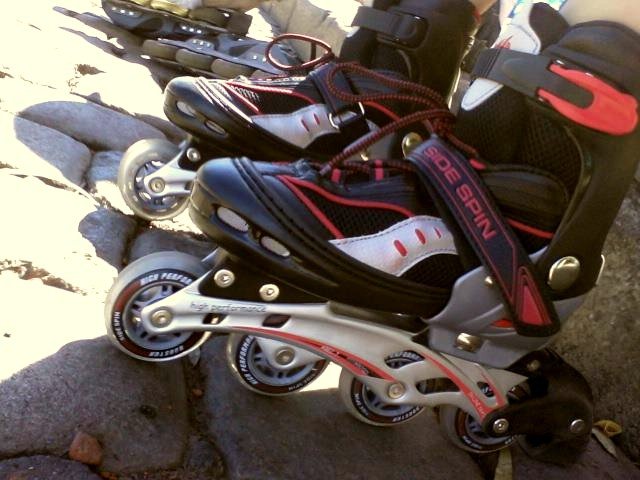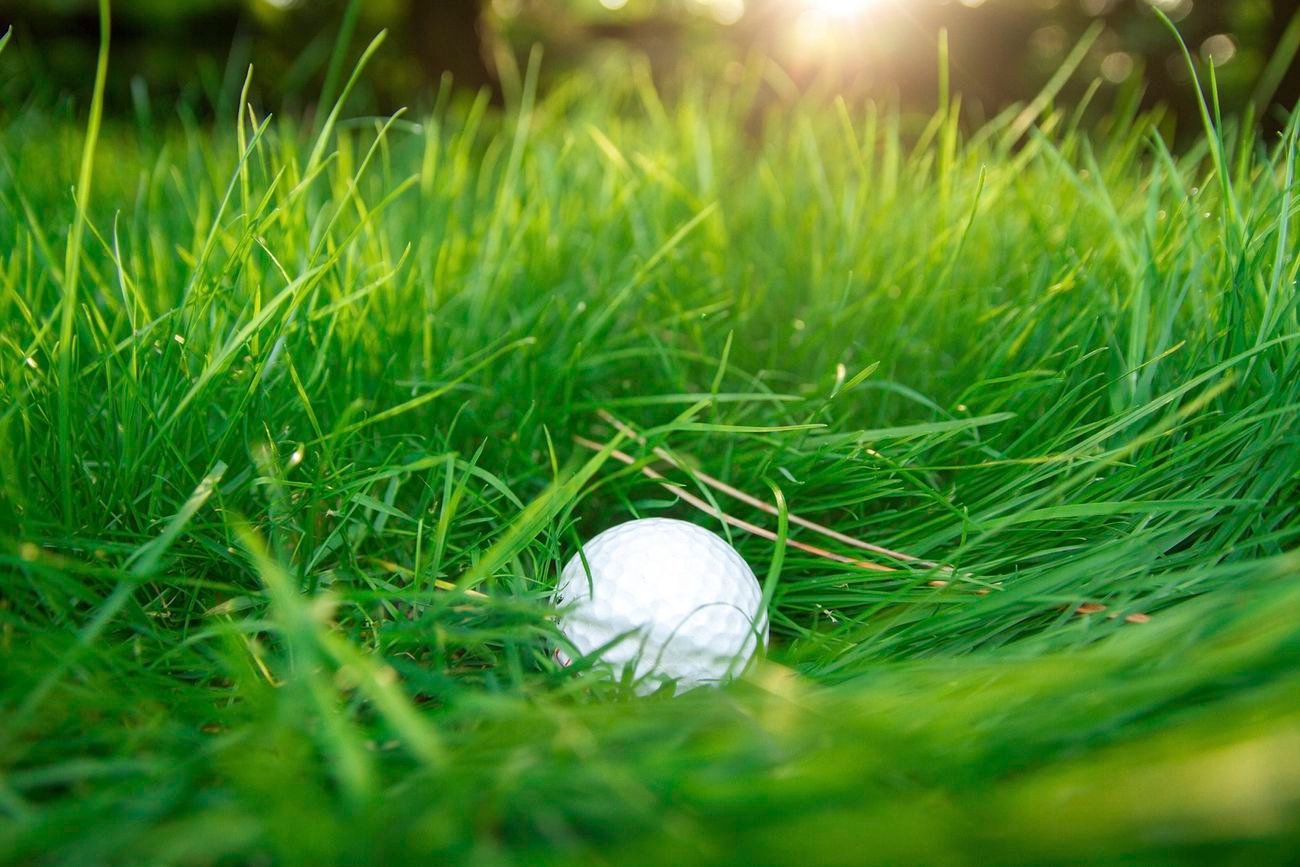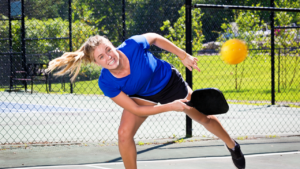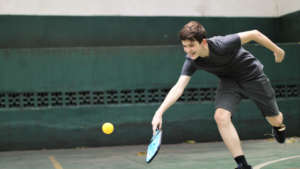Have you ever watched a master pickleball player effortlessly send the ball curving through the air, leaving their opponents utterly bewildered? You might wonder how they manage to create that elusive sidespin, which seems to defy the laws of physics. Well, wonder no more! In this article, we will uncover the sidespin secrets that can put you one step ahead of your pickleball opponent. Whether you’re a seasoned player looking to add an extra trick to your repertoire or a curious novice ready to unravel the mysteries of this deceptive spin, get ready to dive into the world of sidespin and unlock the key to confusion on the court.
Table of Contents
- Mastering the Art of Sidespin in Pickleball: A Game-Changing Tactic
- Unveiling the Science Behind Sidespin: Understanding the Physics at Play
- Strategic Placement: Using Sidespin to Control the Ball’s Trajectory
- Disorienting Your Opponent: Tips and Tricks for Applying Effective Sidespin
- Unpredictability as the Key: Incorporating Sidespin into Your Offensive and Defensive Moves
- Q&A
- Key Takeaways

Mastering the Art of Sidespin in Pickleball: A Game-Changing Tactic
In the world of pickleball, understanding and utilizing different techniques can elevate your game to new heights. One such game-changing tactic that can leave your opponents in awe is mastering the art of sidespin. While many players focus solely on power and placement, incorporating sidespin into your shots can add an element of unpredictability and skill that can catch even the most seasoned opponents off-guard.
One way to use sidespin effectively is by adding spin to your serves. Instead of simply hitting the ball flat, imagine putting a gentle side-spin on it that makes it curve in mid-air. This can confuse your opponent’s positioning, making it harder for them to return the serve accurately. You can also use sidespin to your advantage when returning shots. By slicing the ball with a sidespin, you can create a curve that hugs the sideline, placing your opponents in a difficult position.
Remember that mastering sidespin takes practice and patience. Start by experimenting with different grips and racket angles to find what works best for you. Focus on generating spin by brushing the ball with your paddle to create the desired effect. As with any new technique, it may take time to perfect, but the payoff in terms of improved gameplay can be well worth the effort. So, embrace the art of sidespin and watch as your opponents struggle to anticipate your next move.

Unveiling the Science Behind Sidespin: Understanding the Physics at Play
Sidespin is a fascinating phenomenon that has captivated sports enthusiasts and scientists alike. Whether in tennis, golf, or other ball sports, understanding the physics behind sidespin can shed light on the seemingly magical movements of the ball. So, what exactly is happening?
At its core, sidespin occurs when a spinning object, such as a ball, rotates around an axis that is not aligned with its direction of travel. This generates a force known as the Magnus force, which influences the ball’s trajectory and behavior. The Magnus effect is most commonly observed when a ball with sidespin curves or swerves in mid-air, bewildering opponents and spectators alike.
Several factors contribute to the appearance of sidespin. Firstly, the tilt and angle of the racket, club, or any striking instrument greatly influence the direction and intensity of the spin. Furthermore, the surface texture of the ball can create more or less friction, enhancing the sidespin effect. By understanding these variables and how they interact, players can master the art of sidespin and strategically utilize it to their advantage.
- Side effects of sidespin:
- Curving or swerving: Sidespin imparts a sideways force on the ball that causes it to veer off from its expected trajectory. This curving effect can be used to deceive opponents or to expertly manipulate the ball’s path to avoid obstacles.
- Enhanced topspin or backspin: Depending on the direction and tilt, sidespin can reinforce the spin already present on the ball, resulting in increased topspin or backspin. This can dramatically affect the bounce and behavior of the ball after impact, making it challenging for opponents to anticipate its movement.
- Bouncing irregularities: Sidespin can also lead to unpredictable bounces. The combination of forward motion and sideways spin introduces complexities that change the anticipated path and rebound angle of the ball, adding an element of surprise to the game.
The science behind sidespin is a captivating blend of physics, technique, and strategy. Whether you’re a sports enthusiast or a curious mind, exploring the forces at play can deepen your appreciation for the intricacies of the game. Next time you witness a ball gracefully bending its course or unpredictably bouncing off the court, revel in the knowledge that you now have a glimpse into the science behind the magic.

Strategic Placement: Using Sidespin to Control the Ball’s Trajectory
Mastering the Art of Strategic Placement
When it comes to the game of tennis, finesse and precision are key to outmaneuvering your opponent. One of the lesser-known techniques that can significantly impact your game is utilizing sidespin to control the trajectory of the ball. By imparting a spin on the tennis ball, you can manipulate its flight path, granting you a strategic advantage on the court.
Here are a few ways you can use sidespin to control the ball’s trajectory:
- Curving the Shot: One of the primary uses of sidespin is to curve the ball in a controlled manner. By striking the ball with a sideways motion, you can create a spinning effect that causes the ball to deviate from its linear path. This technique is particularly effective when aiming to hit the ball around obstacles or to perform shots that surprise your opponent.
- Changing Direction: Sidespin also enables you to alter the direction of the ball mid-flight. By striking the ball with a combination of topspin and sidespin or backspin and sidespin, you can not only change the trajectory but also add an unpredictable element to your shots. This can prove to be a formidable weapon, as your opponent struggles to anticipate the ball’s movement, giving you the upper hand during rallies.
- Adjusting Bounce: Utilizing sidespin can also affect the ball’s bounce. When you apply sidespin, the ball will interact with the court surface differently, causing it to bounce at irregular angles. This can catch your opponent off-guard, making it more challenging for them to return the shot effectively.
By mastering the skill of executing sidespin, you open up a world of possibilities on the tennis court. Remember to continuously practice and refine your technique to become a true maestro of strategic ball placement. Whether you’re a beginner or an advanced player, incorporating sidespin into your game will undoubtedly elevate your performance to new heights.

Disorienting Your Opponent: Tips and Tricks for Applying Effective Sidespin
When it comes to table tennis, mastering the art of sidespin can significantly disorient your opponent’s game plan. By utilizing different angles and spins, you can keep your adversary on their toes and gain a competitive edge. Here are some tips and tricks to help you apply effective sidespin in your shots:
1. Vary the Placement
One of the most effective ways to disorient your opponent is by varying the placement of your shots. By hitting the ball with sidespin, you can make it curve in different directions. Aim for the edges of the table, changing the angle from extreme left to right, leaving your opponent struggling to predict the trajectory of the ball.
2. Experiment with Different Angles
Playing with different angles can turn your shots into formidable weapons. Instead of always aiming for a straight path, try hitting the ball with a diagonal motion, going from corner to corner. This will create a wider curve and make it more challenging for your opponent to return the shot effectively.
3. Combine Sidespin with Topspin or Backspin
Another trick to disorient your opponent is by combining your sidespin shots with topspin or backspin. This can make the ball bounce in unexpected ways, creating difficulty in returning the shot. Experiment with different combinations to keep your opponent guessing and struggling to adapt to your playing style.
Mastering the skill of applying effective sidespin in table tennis can give you an incredible advantage over your opponents. Remember to stay creative and unpredictable, constantly refining your technique to keep them disoriented throughout the match. Practice diligently, and soon you’ll be spinning your way to victory!
Unpredictability as the Key: Incorporating Sidespin into Your Offensive and Defensive Moves
When it comes to table tennis, the key to gaining an edge over your opponents lies in unpredictability. Incorporating sidespin into your offensive and defensive moves can be a game-changer that catches your adversaries off guard. By adding spin to your shots, you can create deceptive trajectories and alter the speed and direction of the ball, making it incredibly challenging for your opponents to anticipate your moves.
Incorporating sidespin into your offensive arsenal:
- Use sidespin to enhance your topspin shots. By brushing the ball on one side while executing a topspin stroke, you can generate a wicked topspin with a sideways spin. This not only increases the speed and rotation of the ball but also adds a lateral movement, making it difficult to return.
- Master the sidespin flip. By utilizing sidespin in your flick shots, you can create unexpected angles and change the direction of the ball mid-flight. Go for these shots when your opponent least expects it, and watch them struggle to adjust.
- Deceptive serves with sidespin. Incorporate sidespin into your serves to confuse your opponents right from the start. Vary the placement, spin, and amount of sidespin to keep your opponents guessing and disrupt their premeditated strategies.
Using sidespin defensively:
- Short sidespin pushes. When your opponent’s shot comes up short, seize the opportunity to execute a quick push with sidespin. The added spin will make the ball bounce unusually and force your opponent into awkward positions, buying you time to prepare for your next offensive move.
- Sidespin blocks for counterattacks. Instead of executing a traditional block, embrace sidespin to redirect the ball with an unexpected angle. This can destabilize your opponent’s timing and positioning, enabling you to counterattack with a follow-up offensive shot.
- Sidespin defensive chops. By incorporating sidespin into your defensive chops, you create an extra layer of variation and challenge for your opponent. The combination of backspin and sidespin can result in highly unpredictable returns that disrupt your opponent’s rhythm.
Unleashing the power of sidespin adds an element of surprise to your game, keeping your opponents constantly guessing. Practice and experiment with various techniques and shot combinations to master the art of incorporating sidespin into your offensive and defensive moves. With patience and dedication, you’ll become a formidable force that will leave your opponents bewildered on the table.
Q&A
What is sidespin, and how can it be used in pickleball?
Sidespin refers to putting spin on the ball so that it rotates horizontally while in flight. In pickleball, sidespin can be used to deceive and confuse your opponent by making the ball curve unexpectedly.
Why is sidespin such a valuable weapon in pickleball?
Sidespin can mess with your opponent’s timing and positioning, causing them to misjudge the ball’s trajectory. This gives you a strategic advantage, as it makes it harder for them to defend effectively.
Which shots are ideal for applying sidespin?
Shots like cross-court dinks and slice shots are perfect for side spin. By brushing the ball sideways, you can make it curve and change direction, catching your opponent off guard.
How can I execute sidespin effectively?
To apply sidespin, focus on brushing the ball with the paddle in a sideways motion. The angle and placement of the paddle will determine the amount and type of spin you generate. Practice and experimentation are key to mastering this technique.
What are some common mistakes to avoid when using sidespin?
One common mistake is overusing sidespin, which can make your shots predictable and easier to read. Another mistake is neglecting your footwork and positioning, as sidespin alone won’t compensate for poor footwork.
How can I anticipate and counter a side-spinning shot?
To anticipate a side-spinning shot, watch your opponent’s paddle angle and body positioning. Stay alert and be prepared for unexpected curves. Adjust your positioning and footwork accordingly to counter the shot effectively.
Are there any other strategies to complement sidespin in pickleball?
Yes, sidespin works well in conjunction with other techniques like topspin, lobs, and drop shots. By incorporating various shot types and spins into your game, you’ll keep your opponent guessing and maintain a versatile playing style.
Key Takeaways
As the dust settles on the pickleball court, a mischievous smile creeps across your face, knowing that you’ve just unlocked the secrets of sidespin. With each crafty shot, you’ve left your opponent baffled and mystified, trying to decrypt your strategic maneuvers. That enigmatic twist in the trajectory of your shots has introduced a new dimension to your game, filling it with suspense and excitement.
By delving into the realm of sidespin, you have discovered an arsenal of opportunities that were previously concealed, hidden in plain sight. As you’ve unleashed the power of this hidden gem, you’ve found that it masks your intentions, rendering your shots unpredictable and perplexing to those standing on the other side of the court. Confusion reigns supreme as they scramble to adapt, their rackets in a bewildering dance with the spinning orbs hurled their way.
But let’s not keep these secrets buried any longer; let’s raise the curtain on the art of sidespin, allowing it to mesmerize and captivate your pickleball comrades. By perfecting the delicate dance of the paddle, mastering the slight adjustments in grip and angle, you will wield the sidespin with finesse, incorporating it into your game seamlessly. The resulting shots will defy expectations, veering off in unexpected directions and leaving your opponents questioning their own reflexes.
As you embark on this new journey, it’s important to remember that with great power comes great responsibility. Sidespin is a double-edged sword, demanding precision and practice. It must be used sparingly, like a skilled illusionist performing their tricks, never revealing the secrets behind the curtain. Maintain the element of surprise, catch your opponents off guard, and keep them constantly guessing.
So, fellow pickleball enthusiasts, embrace the enigma of the sidespin and let it become your secret weapon on the court. Delight in the bewilderment that dances in your opponent’s eyes as they struggle to decipher your next move. Unleash your creativity, experiment with newfound techniques, and etch your name into the pickleball hall of fame as the master of sidespin deception.
In this game of wits and finesse, remember to share the knowledge, helping others unlock their own sidespin potential. And as the pickleball community thrives on this collective growth, the court becomes a playground of mystery, exhilaration, and everlasting camaraderie.
Now, my friends, it’s time to step onto the pickleball court, armed with your newfound sidespin secrets, and transform each match into a mesmerizing show. Let the bewildered gasps and astonished applause follow you, leaving your opponents scratching their heads in a state of unraveling confusion. Good luck, and may the sidespin secrets forever be in your favor!
As an affiliate, my content may feature links to products I personally use and recommend. By taking action, like subscribing or making a purchase, you’ll be supporting my work and fueling my taco cravings at the same time. Win-win, right?
Want to read more? Check out our Affiliate Disclosure page.




